The Amphibian Pathogen Project (APP) has officially begun and the students, teachers and myself survived some sweltering 9-hour days. A typical field day involves: 1-2 teachers, 3-4 students, 3-4 different wetlands and lots of critter catching! We use nets, buckets and our hands to catch the animals before we process them. Ideally, we’d catch mostly adult frogs, newts, and salamanders but we’ve been getting a lot of tadpoles.
Once we catch the critters, we sort them by species or life stage into separate water-filled containers. Initially, this step proved to be the most difficult since we had no idea how to tell different tadpole and salamander larvae apart. After combing through several field guides and DNR websites for tips and tricks, the identification process has gotten easier. However, the best method known for identifying tadpoles is actually to look at their mouth-parts under a microscope. Once identified, the animals are assigned an ID, weighed, and either swabbed or humanely euthanized (only larval stages without a developed spinal column & only a small number). This drastic step is necessary for organ tissue extractions and some later identification.
For adult frogs/salamanders, we swab their oral cavity to look for the presence of Ranavirus and swab the integument on their ventrum, thighs and digits to look for the presence of chytrid fungus. For tadpoles, we swab their mouthparts and gills instead. Don’t be fooled, sometimes getting a frog mouth open is a tall order! We use the swab, our fingers and small pieces of cardboard to wiggle a small parting between their lips – it does not always work. These specimens are also very slimy and wiggly so they can be hard to restrain as well.
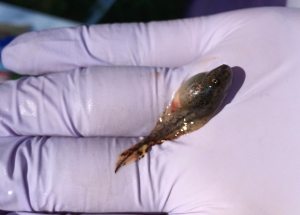
Cope’s gray tree frog tadpole
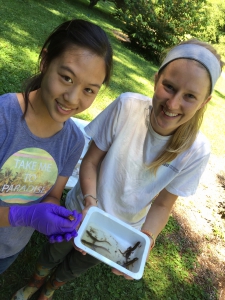
Melody and Katie hold red spotted newts
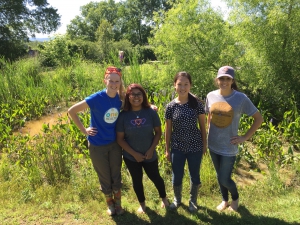
Katie and some CRESO students pose in front of a wetland
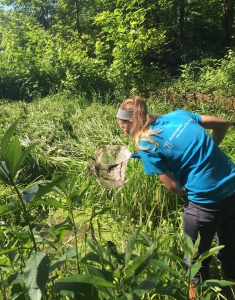
Katie checks a net after a pond sweep to look for amphibians
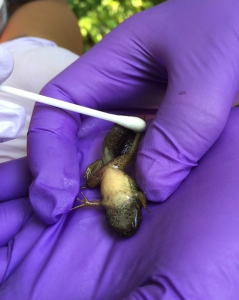
Swabbing the ventrum and thighs of a green froglet (because it has all 4 legs & a prominent tail)
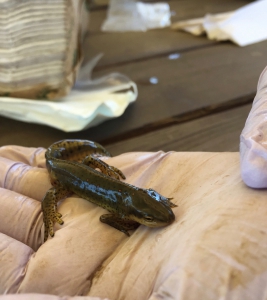
Eastern red spotted newt
As for the adventurous side of things, I’ve taken some time off to explore! I spent an afternoon hiking on Haw Ridge, which is a recreational area in town that has trails along the Clinch River. This past weekend was the “Secret City Festival” so Oak Ridge National Lab opened some facilities for public tours. I seized this opportunity to check out the X-10 Graphite Reactor that was used to refine Uranium and create Plutonium for the atom bombs of WWII. No worries, the nuclear reactor hasn’t been operational since 1963, however, spent Uranium plugs are still floating in a 20 ft deep pool of water below the building… don don don! And finally, to mitigate our 95-degree weather, I spent some of the weekend on Norris Lake boating, swimming and cliff jumping into the water!
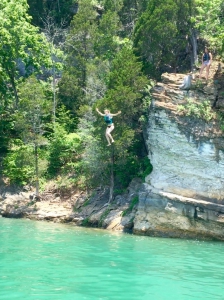
Because what field researcher doesn’t enjoy jumping into nature?

